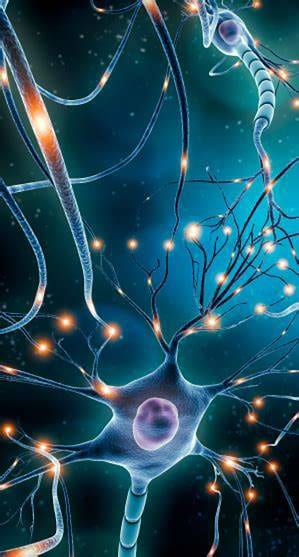Movement disorders are a group of neurological conditions that affect the ability to control movement, causing symptoms such as tremors, stiffness, slowness, and involuntary movements. These disorders can significantly impact a person’s quality of life, making daily activities challenging. However, with advancements in medical research, new treatment options are emerging, offering hope to those living with movement disorders. Let’s explore the various movement disorders and the latest treatment options at the Regeneration Center today.[1]

Diagnosing movement disorders involves a comprehensive evaluation by a neurologist or movement disorder specialist. The evaluation thoroughly reviews the patient’s medical history, physical examination, and neurological assessment. Additional tests, such as brain imaging (MRI or CT scan), blood tests, and genetic testing, may be performed to rule out other conditions and identify the specific type of movement disorder.[2]
Stem cell therapy is emerging as a promising frontier in treating movement disorders. This innovative approach involves using stem cells, which are unspecialized cells capable of developing into various types of cells, such as astrocytes and neural stem cells. They can help regenerate lost cell signaling and neurotransmitters, replace damaged nerve cells, and promote neurogenesis. The Regeneration Center is at the forefront of regenerative medicine by exploring the potential of stem cell therapy for treating a range of movement disorders and multiple system atrophy. The goal is to use stem cells to restore the function of the damaged or lost neurons responsible for controlling movement. One approach involves isolating and expanding UC-MSC stem cells and neural cell-specific growth factors. We can achieve better results by reprogramming them and differentiating them into dopamine-producing neurons, which can be transplanted into the brain to replace the lost cells in patients with these diseases.[4]
While stem cell therapy is still in the early stages, clinical trials have shown promising results in improving motor function and reducing symptoms in some patients with movement disorders. The Regeneration Center is committed to finding solutions and believes more long-term stem cell research will be needed to establish the long-term safety and efficacy of neural stem cell therapy and refine the techniques for generating and transplanting the cells and growth factors required for successful treatments. As our research progresses, stem cell therapy may offer new hope for individuals living with movement disorders, providing a means to restore function and improve quality of life.
In addition to medical treatments, lifestyle modifications, brain friendly diets, and support play crucial roles in managing movement disorders. Regular exercise, physical therapy, and occupational therapy can help improve mobility, balance, and daily functioning. Speech therapy may be beneficial for those with speech and swallowing difficulties. Support groups and counseling can provide emotional support and coping strategies for individuals and their families.
The goal of stem cell therapy for movement disorders is to alleviate the patient’s symptoms and restore any lost neurological or physical function. Most treatments are outpatient, and transplanting stem cells are non-invasive and painless [5]. Stem cell therapy may not be an appropriate treatment option for all cases. Still, for those that qualify, the cells are commonly delivered through the combination of Intravenously, stem cell nebulizers, Intrathecal Injections, or fluoroscopy guidance delivery (in a hospital setting only) of stem cells to bypass the blood-brain barrier.
If you would like to learn more about how functional medical therapies can be applied to treat movement disorders or if you have any other questions, please contact us today.
[1] ^Mestre TA, Bhidayasiri R. Introducing the new “Movement Disorders Rounds.” Parkinsonism Relat Disord. 2018 Oct;55:1. doi: 10.1016/j.parkreldis.2018.09.024. PMID: 30396637.
[2] ^ Jagota P, Lim SY, Pal PK, Lee JY, Kukkle PL, Fujioka S, Shang H, Phokaewvarangkul O, Bhidayasiri R, Mohamed Ibrahim N, Ugawa Y, Aldaajani Z, Jeon B, Diesta C, Shambetova C, Lin CH. Genetic Movement Disorders Commonly Seen in Asians and Thailand. Mov Disord Clin Pract. 2023 May 8;10(6):878-895. doi: 10.1002/mdc3.13737. PMID: 37332644; PMCID: PMC10272919.
[3] ^ Pandey S, Chouksey A, Pitakpatapee Y, Srivanitchapoom P. Movement Disorders and Musculoskeletal System: A Reciprocal Relationship. Mov Disord Clin Pract. 2021 Dec 16;9(2):156-169. doi: 10.1002/mdc3.13390. PMID: 35146055; PMCID: PMC8810446.
[4] ^ Mochizuki H, Choong CJ, Yasuda T. The promises of stem cells: stem cell therapy for movement disorders. Parkinsonism Relat Disord. 2014 Jan;20 Suppl 1:S128-31. doi: 10.1016/S1353-8020(13)70031-2. PMID: 24262163.
[5] ^ Steward MM, Sridhar A, Meyer JS. Neural regeneration. Curr Top Microbiol Immunol. 2013;367:163-91. doi: 10.1007/82_2012_302. PMID: 23292211.